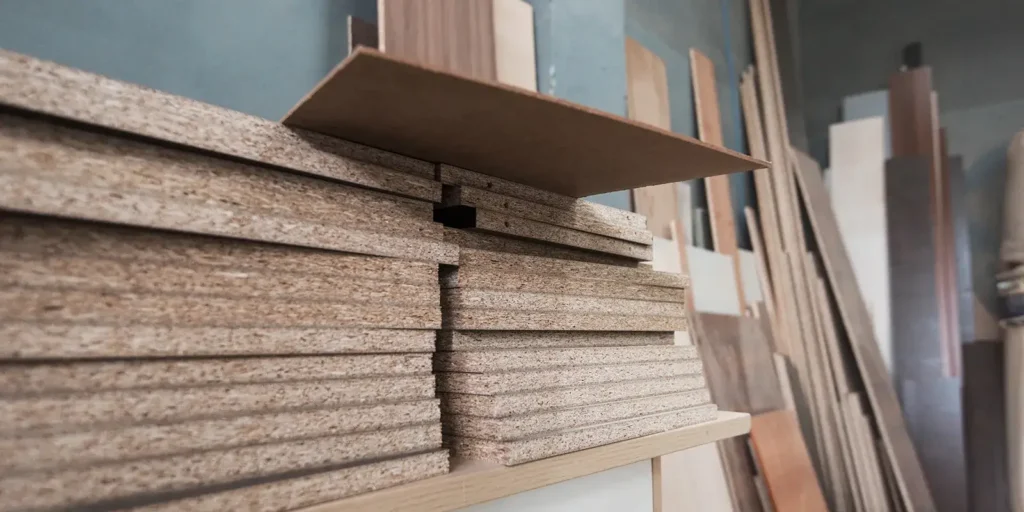When it comes to engineered wood products, particle board, also known as low-density fiberboard or chipboard, stands out as a versatile and widely used material in furniture and interior applications. In this comprehensive guide, we will explore the different types of particleboards available in the market, their characteristics, and diverse applications.

What is Particle Board?
Particleboard is crafted by binding wood chips, sawdust, or sawmill shavings with a synthetic resin or other binders. The use of Urea Formaldehyde as a glue is common in binding wooden chips. This engineered wood product finds its application as a substitute for plywood in various construction and furniture-making projects.
Types of Particle Board:
Single-layer Particle Board:
- Consists of wood particles of the same size pressed together.
- Flat, dense board suitable for veneering or plastic lamination, but not for painting.
- Water-resistant but not waterproof, making it ideal for interior applications.
Three-layer Particle Board:
Comprises a layer of large wood particles sandwiched between two layers of small and highly dense wood particles.
Outer layers have a higher resin content than the inner layer, providing a smooth surface suitable for painting.
Graded Density Particle Board:
Features a layer of coarse wood particles sandwiched between two layers of fine wood particles.
Commonly used in the construction of cabinets and wooden furniture.
Melamine Particle Board:
Surface is covered with a decor paper infused with melamine under high heat and pressure.
Bonded using melamine-urea formaldehyde resin and wax emulsion, making it water-resistant and scratch-resistant.
Available in various colors and textures, used in applications such as wall paneling, furniture, and modular kitchens.
Cement-bonded Particle Board:
Uses magnesium-based cement or Portland cement as the bonding agent.
Resistant to moisture, fire, termites, and rot due to cement content.
Suitable for constructing false ceilings, walls, and coverings for floors in high humidity areas.
Veneered Particle Board:
Has a thin slice of wood veneer attached to its surface, resembling a natural wooden board.
More resistant to warping compared to conventional particleboard.
Laminated Particle Board:
A thin laminate sheet is attached to the surface of plain particleboard.
Enhances aesthetics and increases durability.
Applications:
Particleboards find versatile applications, including:
- Flooring: Used as coverings for hardwood floors to protect against scratches and in temporary structures.
- Doors: Commonly used as the core material for solid core doors and flush doors due to its smooth and flat surface.
- Ceilings: Used in false ceilings for thermal insulation and as ceiling tiles in various buildings.
- Furniture: Widely used for making all kinds of furniture due to its cost-effectiveness and versatility.
In conclusion, understanding the various types of particleboards and their applications empowers individuals in making informed decisions for their construction and woodworking projects. Whether it’s for flooring, doors, ceilings, or furniture, particleboards offer a range of options catering to different needs and preferences in the world of engineered wood products.
